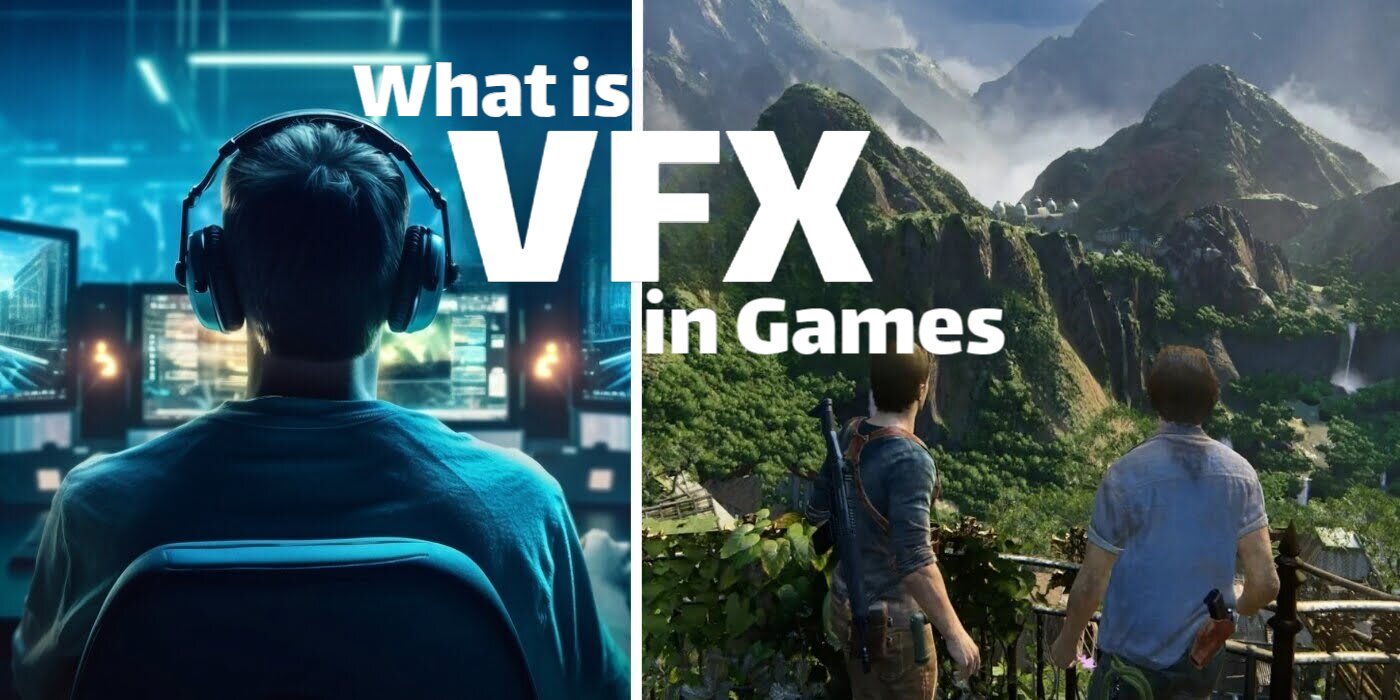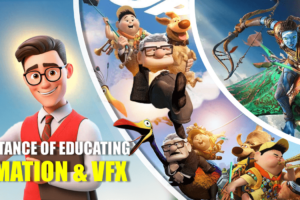
What is VFX in Games
VFX has gone through a vigorous wave of change in the last thirty years and especially its history in game development is long enough to be storied. The story began from scratch with the simple pixelated graphics of the early arcade games. It has reached photo-realistic visuals of today’s ultra-realistic visual effects but still has a long way to go. Earlier, games relied heavily on static 2D images to create their visuals, but now the usage of VFX in games has increased so that the companies can create high graphics games and more. Technology continued to progress and developers continued experimenting with 3D graphics, which eventually paved the way for many groundbreaking innovations. However, it wasn’t until the late 1990s that 3D graphics began to be used extensively in games.
What is VFX in Games? A Complete Overview
The VFX in games can be referred to as Visual effects. These are the ones who meld in the computer-made effects that add realism to the game or make the actions look cooler. VFX can vary from something as simple as smoke, fire, or explosions to something more complicated such as rain, fog, or even snow. Additionally, they can be small details such as the burning of the sparks off your sword when you move it, or the leaves swirled around you in the forest.
Animation and VFX play intricate yet crucial roles in gaming, enriching the visual and interactive experience for players. Here’s how they help in contributing extraordinary experience:
Advantages of using Animation and VFX in Games
1. Immersive Environments:
Animation and VFX bring game worlds to life-like scenarios with added surrealistic circumstances, making them vibrant, dynamic, and immersive. VFX elements bring effects like fire, swaying trees, flowing waterfalls, plane landing, etc create a sense of realism.
2. Character Animation:
Detailed character animations enhance storytelling and gameplay by conveying emotion, movement, and personality. Fluid movements, realistic expressions, and convincing interactions with the environment make characters feel alive.
3. Gameplay Feedback:
Visual effects help in providing instant feedback to players indicating successful actions, damage taken, or special abilities activated. This immediate feedback loop enhances gameplay by helping players understand and negotiate the consequences of their actions triggering their critical thinking.
4. Special Effects:
Explosions, spells, weather effects, and other special effects add excitement and spectacle to gaming experiences. Well-executed VFX can make battles feel epic, magic spells feel powerful, and environmental hazards feel dangerous.
5. User Interface Enhancements:
Animation is also used in user interface design to create smooth transitions, intuitive interactions, and visually appealing menus. These elements contribute to a polished and user-friendly interface that enhances the overall player experience.
6. Technical Advancements:
Advancements in animation and VFX technology, such as motion capture, real-time rendering, and physics simulations, enable developers to create more complex and realistic visuals. This allows for more detailed character animations, lifelike environments, and immersive effects.
7. Artistic Expression:
Animation and VFX provide game developers with a powerful tool for artistic expression. Whether it’s custom graphics, surreal environments, or striking characters, these elements allow developers to create unique and visually appealing gaming experiences.
The need for the application of visual effects varies depending on the type of game. Most of the basic games just need animated effects whereas advanced games like PUBG, Call of Duty, FreeFire, etc require high-quality visual effects. For instance, puzzle games need comparatively simpler environmental effects, whereas action games might need explosive effects and dramatic character animations.
Examples of Games that use High-quality VFX
A) Death Stranding: Hideo Kojima’s action-strand game Death Stranding is a visual marvel that blends sci-fi themes with realistic surroundings. The visual effects in the game are a major factor in its popularity, particularly in terms of creating an immersive world that goes well with the post-apocalyptic storyline of the game. The game features amazing graphics, lifelike character motions, and powerful particle effects. Together, these components produce a spooky yet alluring ambiance that pulls players into the game’s universe.
B) The Resident Evil 2: Amazing visual effects, and real-life background settings; the Resident Evil 2 remake is a both horrifying and captivating gaming experience. Realistic character motions, powerful particle effects, and breathtaking graphics are some of the main visual effects implemented. As players explore the game’s ominous and dark locations, a sense of tension and dread is evoked by the use of lighting and shadow effects. Along with the expert make-up team, the VFX team’s meticulous attention to detail in producing realistic and graphic images of bloodshed and violence also contributes to the overall fright and horror of the game.
C) Control: In Control, players are kept on the edge of their seats by a combination of supernatural elements with the backdrop of a spooky setting. The VFX components of the game are essential to its success because they build a realistic yet bizarre universe. In games, some of the most used visual effects are, realistic lighting effects, particle effects, and physics-based destruction. Together, these components produce an engrossing and immersive setting that pulls players further into the game’s universe.
(Game genres)
A) Action Games: Action games require powerful and explosive visual effects to make the users come to the edge of their seats, evoke a sense of suspense, and give an adrenaline rush. These effects include strong character animations, shooting, and explosions.
B) RPG Games: To achieve a surrealistic and immersive experience, RPG games need to use a range of visual effects. Lighting, weather, and intricate environmental impacts are some of these.
C) Puzzle Games: To improve the gameplay experience, puzzle games need to have the latest, eye-catching graphic effects. These effects include particle effects, environmental basics, and user interface animations. (Passive voice)
We have covered the various methods and applications of visual effects in video games. Visual effects are undoubtedly an essential component of creating a game environment that is both immersive and engaging. With the help of the mentioned techniques, you can produce visually striking effects that improve the entire gaming experience for players.
Indeed, the future of video game visuals looks promising. Thanks to advancements in technology that will redefine game design even further. One of the most exciting developments among these is the rise of virtual reality (VR) and augmented reality (AR). This offer an immersive experiences beyond ordinary traditional video game exposure. As VR and AR become more popular, we can expect to see unique visual effects exclusive to these platforms such as advanced lighting effects and real-time simulations and effects.
VFX in Games, the next Big thing
One among the other popular trends is the use of ray tracing technology. It helps in producing remarkably realistic lighting effects and reflections. This technology is anticipated to become more common in the future and has already been included in several well-known games, including Cyberpunk 2077 and Control. We can soon expect to see VFX elements in video games that are even more lifelike and impressive than what we are used to seeing because of the growing usage of ray tracing.
Another innovative field of research and development that is capable of completely transforming the gaming industry is AI-driven visual effects. We can benefit from AI by producing dynamic material that reacts instantly to player activities and to produce animations that are more subtle and lifelike. So we can expect the production of more games that offer such intricate and captivating gameplay experiences that are more sensitive to player input.
Conclusion
As we conclude this article, we can say that today Animation and VFX are integral components of Modern Gaming. They contribute to both the aesthetic appeal and the interactive nature of games. As technology continues to advance, we can expect even more impressive visuals and immersive experiences in future games.



